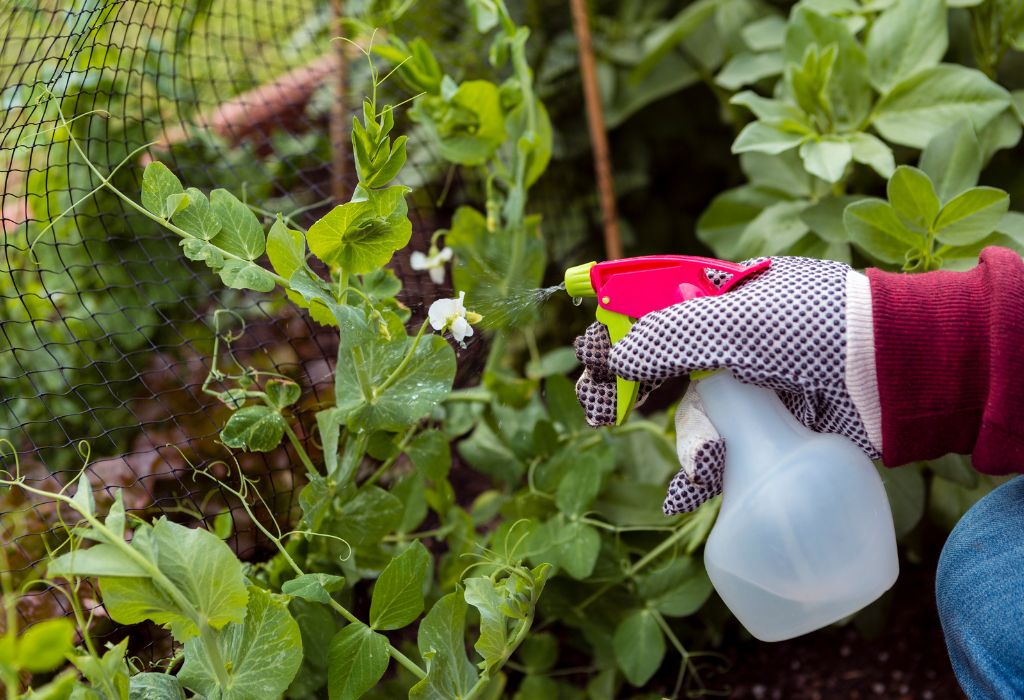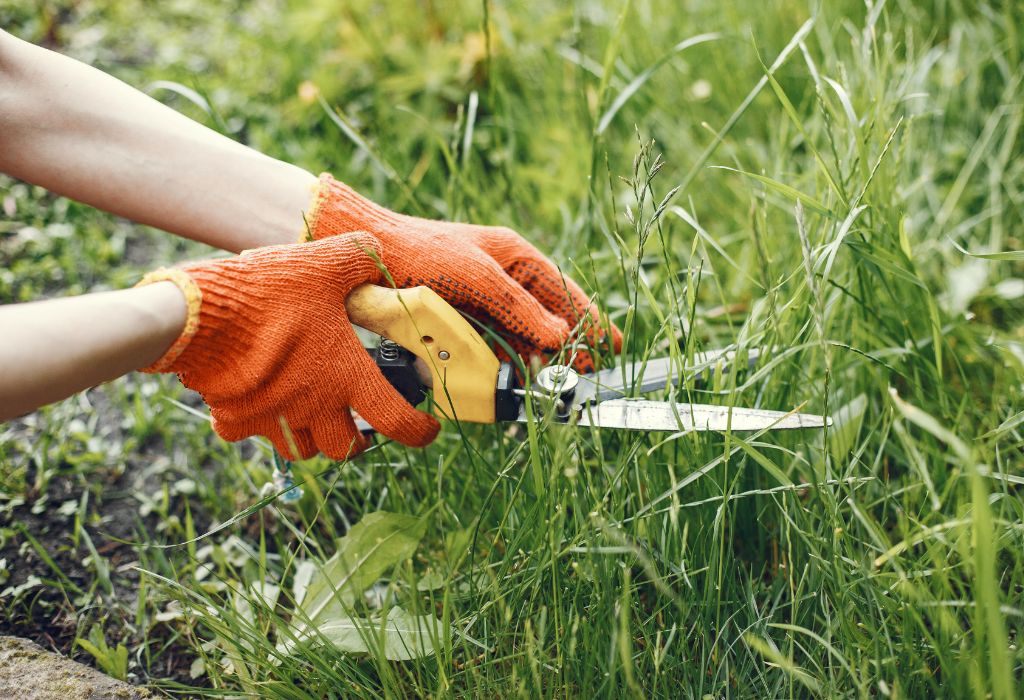Every gardener knows the struggle. You plant your favorite vegetables or flowers, water them daily, and wait for them to thrive—only to see weeds sprouting faster than your crops. These invaders don’t just make the garden messy; they compete with your plants for water, sunlight, and nutrients. Studies show that weeds can reduce crop yields by 30–50% if left uncontrolled.
On top of that, gardeners spend an average of 120+ hours a year pulling weeds by hand. That’s valuable time you could spend enjoying your garden rather than constantly fighting it.
The solution is not to weed more often, but to prevent weeds before they even appear. This guide will show you natural, effective, and long-term strategies to keep your garden weed-free without depending on harmful chemicals.
I. What Does Weed Prevention Mean?

- Control vs. Prevention – Weed control is removing weeds after they grow, while prevention focuses on stopping them from germinating.
- Why Prevention Works Better – It saves time, reduces frustration, and protects soil health.
- Long-Term Benefits – Stronger plants, healthier soil, and fewer weeds returning year after year.
II. Why Do Weeds Appear in Gardens?
- Soil Seed Bank – Weed seeds can survive in soil for 5–10 years, waiting for the right conditions to sprout.
- Seed Spread – Weeds travel through wind, birds, pets, shoes, or contaminated compost.
- Perfect Conditions – Bare soil, moisture, and sunlight make gardens ideal for weeds.
- Gardening Habits – Over-tilling, poor mulching, and uneven watering can trigger weed outbreaks.
Pro Tip: Every patch of exposed soil is an open invitation for weeds.
III. Best Natural Ways to Prevent Weeds in Garden
1. Mulching
Mulch is one of the simplest and most effective prevention tools.
- Organic mulch (straw, leaves, wood chips, grass clippings) blocks sunlight and improves soil as it decomposes.
- Inorganic mulch (landscape fabric, gravel, or plastic sheets) lasts longer but doesn’t enrich soil.
- Apply mulch 2–3 inches thick and refresh annually.
With proper use, mulch reduces weed growth by up to 80%.
2. Cover Crops
Cover crops suppress weeds while improving soil fertility.
- Plant rye, clover, or alfalfa during the off-season.
- They cover soil so weeds don’t get sunlight.
- They add nutrients, organic matter, and prevent erosion.
- Cover crops can reduce weed pressure by 50% or more.
3. Ground Covers & Dense Planting
- Use creeping plants like clover, thyme, or creeping Jenny to form a living carpet that shades weeds out.
- Plant vegetables or flowers closely to minimize open soil.
- Fast-growing crops can outcompete weeds naturally.
4. Soil Solarization
- In summer, moisten soil and cover with clear plastic.
- Leave it in place for 4–6 weeks.
- The sun’s heat kills weed seeds, pests, and diseases.
- Best for preparing new beds before planting.
5. Raised Beds & Containers
- Raised beds reduce weed invasion from surrounding soil.
- Containers are nearly weed-free when filled with clean potting mix.
- Both methods allow better soil management and less maintenance.
6. Smart Watering
- Drip irrigation targets only the plant roots, not surrounding weeds.
- Overhead watering spreads moisture across soil, helping weed seeds germinate.
- Switching to drip irrigation can cut weed growth significantly.
7. Landscape Fabric & Weed Barriers
- Place landscape fabric under mulch for double-layered weed prevention.
- Gravel or stone pathways block weed spread between beds.
- Edging prevents lawn grass from creeping into flower or vegetable beds.
IV. Eco-Friendly Prevention Alternatives
- Corn Gluten Meal – A natural pre-emergent that prevents seeds from germinating. Works best in vegetable gardens before planting.
- Vinegar & Boiling Water – Useful for spot prevention in cracks and walkways, not for garden soil.
- Flame Weeding – Burns young weeds on driveways or paths. Quick, chemical-free option.
V. Mistakes to Avoid in Weed Prevention
- Applying mulch too thinly (less than 2 inches).
- Using compost or mulch contaminated with weed seeds.
- Letting weeds flower and release seeds.
- Depending only on chemical herbicides instead of long-term prevention.
VI. Seasonal Weed Prevention Plan

- Spring – Apply mulch before weeds sprout, prepare soil carefully, and start cover crops in unused beds.
- Summer – Maintain dense planting, water with drip systems, and refresh mulch layers.
- Fall – Add compost, rotate crops, and plant cover crops for winter protection.
- Winter – Clean out beds, remove old weeds, and plan for next season’s prevention.
VII. Natural vs. Chemical Weed Prevention (Comparison Table)
| Method Type | Best For | Advantages | Disadvantages | Long-Term Effectiveness |
| Natural Mulching | Vegetable & flower beds | Improves soil, reduces weeds by up to 80%, eco-friendly | Needs refreshing yearly | High – builds soil over time |
| Cover Crops | Veggie beds, off-season planting | Suppresses weeds by 50%+, adds nutrients, protects soil | Requires timing & space | Very High – long-term soil health |
| Ground Covers | Borders, small beds | Attractive, low maintenance, permanent barrier | May compete for water in dry areas | High – permanent suppression |
| Drip Irrigation | Raised beds & rows | Saves water, targets crops only, reduces weeds | Setup cost | High – prevents new weed germination |
| Corn Gluten Meal | Vegetable beds | Natural pre-emergent, safe for soil | Timing critical, less effective on mature weeds | Medium – good seasonal solution |
| Flame Weeding | Paths & driveways | Instant results, no chemicals | Fire risk, limited to non-crop areas | Medium – works on young weeds only |
| Chemical Herbicides | Large fields, fast removal | Quick results, low labor | Harmful to soil life & pollinators, weeds return stronger | Low – short-term fix only |
VIII. FAQs: Preventing Weeds in Garden
- What is the best way to prevent weeds naturally?
Mulching and cover crops combined provide the most effective long-term prevention. - How effective is mulch against weeds?
Properly applied mulch blocks 70–80% of weed growth. - Can vinegar prevent weeds long-term?
No, vinegar only burns foliage; it doesn’t prevent regrowth. - Do raised beds really reduce weeds?
Yes, raised beds filled with clean soil drastically reduce weeds. - How often should I refresh mulch or ground cover?
At least once a year, preferably in spring or after heavy rains.
IX. Key Statistics Every Gardener Should Know
- Weeds reduce crop yields by 30–50% if uncontrolled.
- A single dandelion can produce up to 15,000 seeds, many viable for years.
- Mulching reduces weed growth by up to 80%.
- Cover crops cut weed pressure by 50%+ while improving soil fertility.
- Gardeners spend an average of 120+ hours annually pulling weeds.
Conclusion
Weed prevention is about working smarter, not harder. By focusing on proactive strategies—like mulching, cover crops, drip irrigation, and raised beds—you can reduce weeds before they ever appear.
Think of prevention as an investment. A little planning today saves you countless hours tomorrow, while creating healthier soil and stronger plants. With consistent effort, your garden will stay weed-free, productive, and beautiful year after year.
I’m Maya L. Greenwood, a lifelong plant lover who believes anyone can grow something beautiful with the right guidance. After years of testing soil mixes, pruning methods, irrigation tricks, and pest-safe solutions, I started EasyGardenTips.com to turn hard-won lessons into step-by-step advice. From seed starting and container gardens to composting and seasonal checklists, my goal is to make gardening simple, sustainable, and fun.
